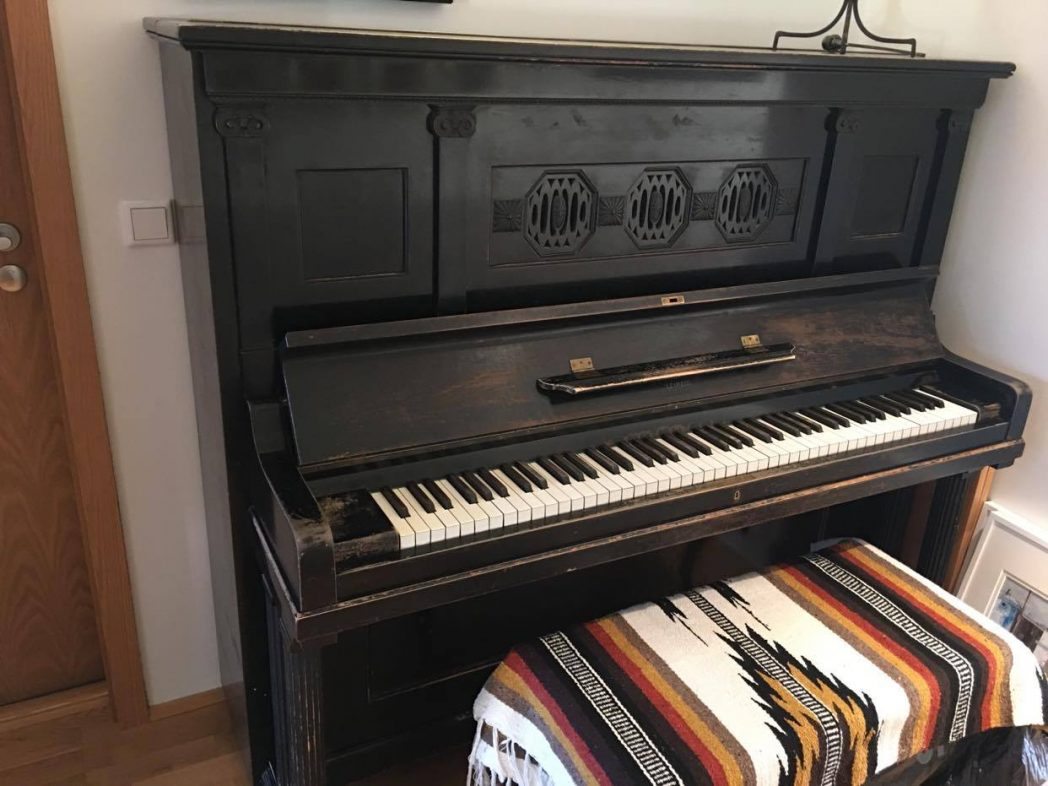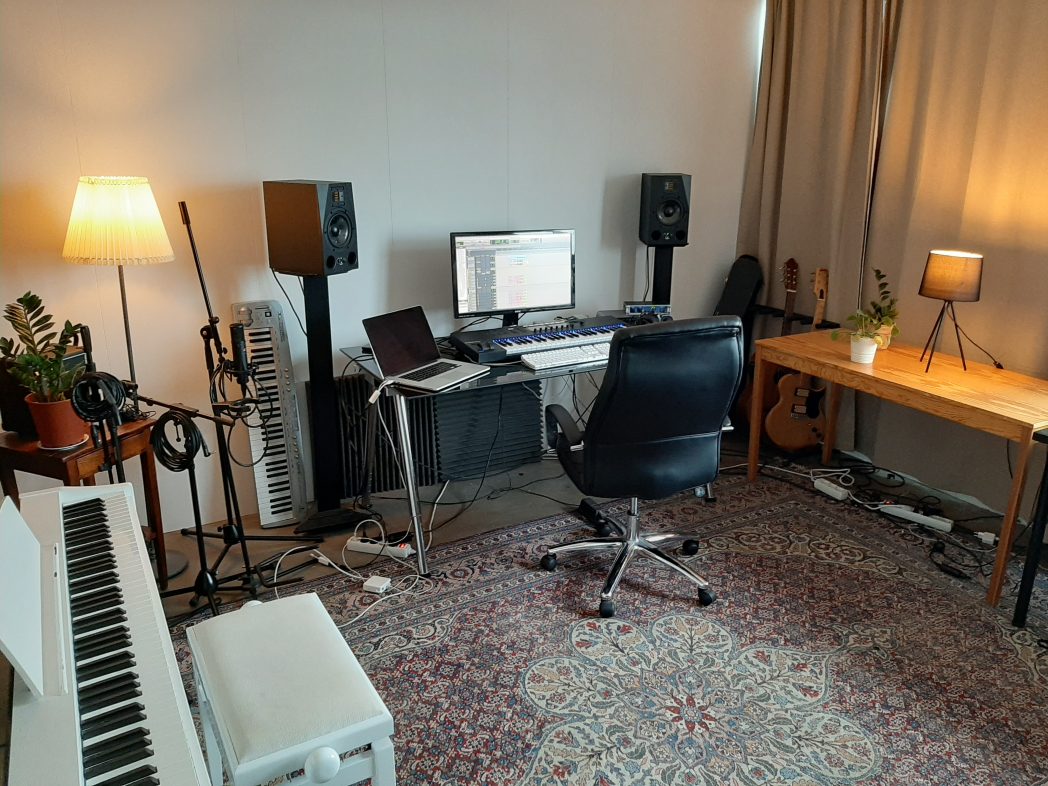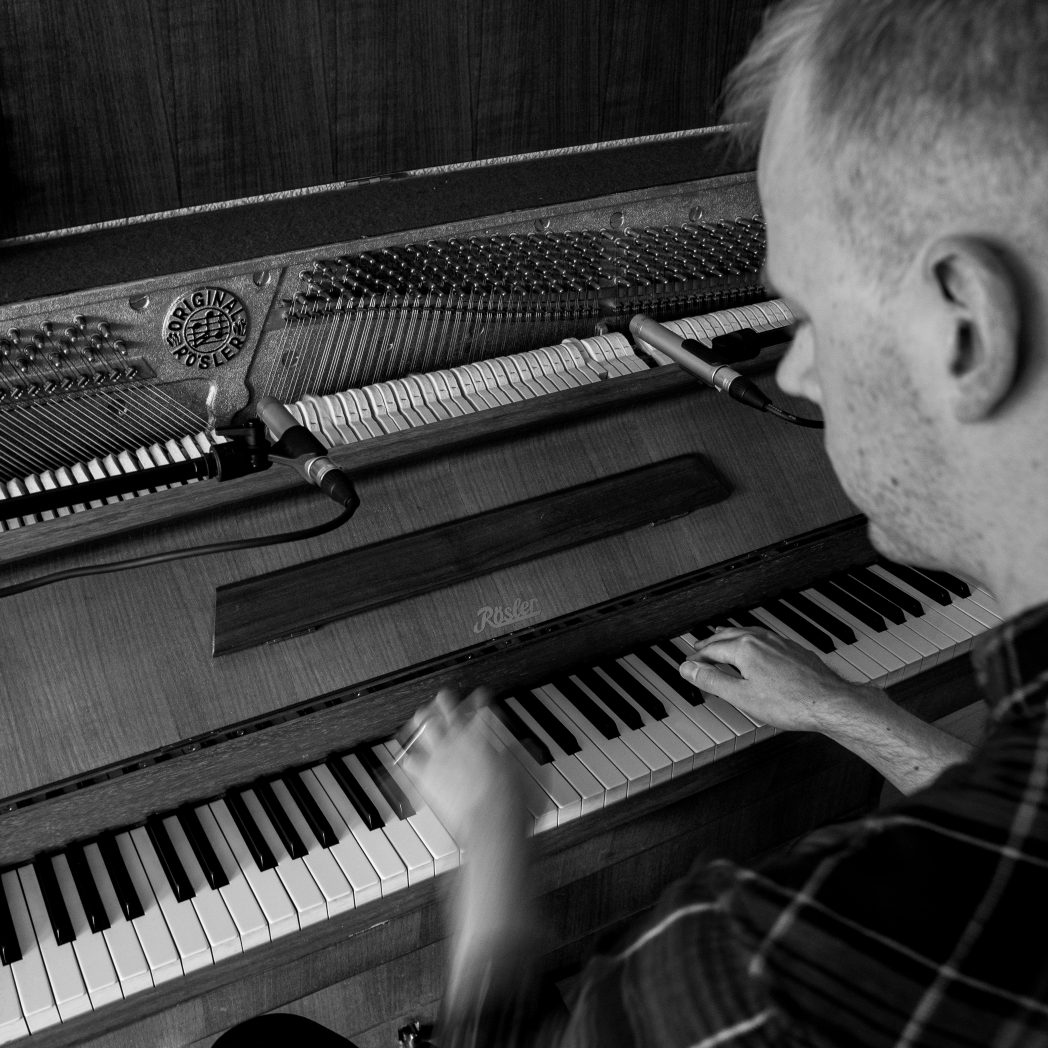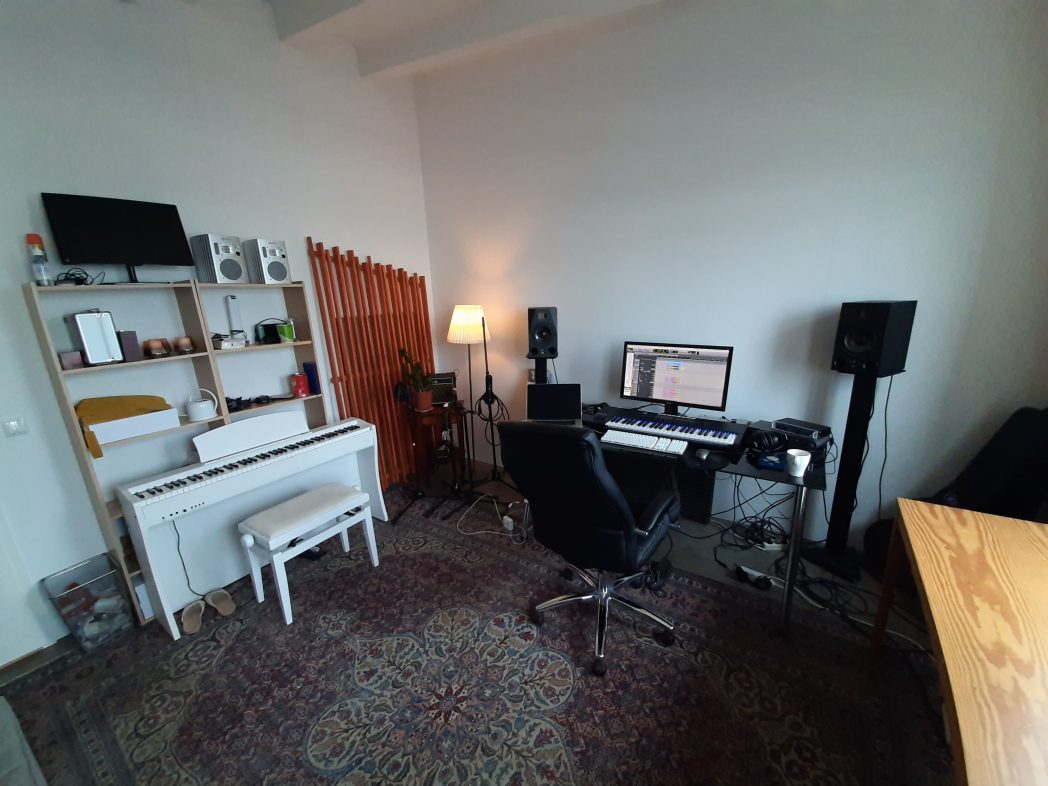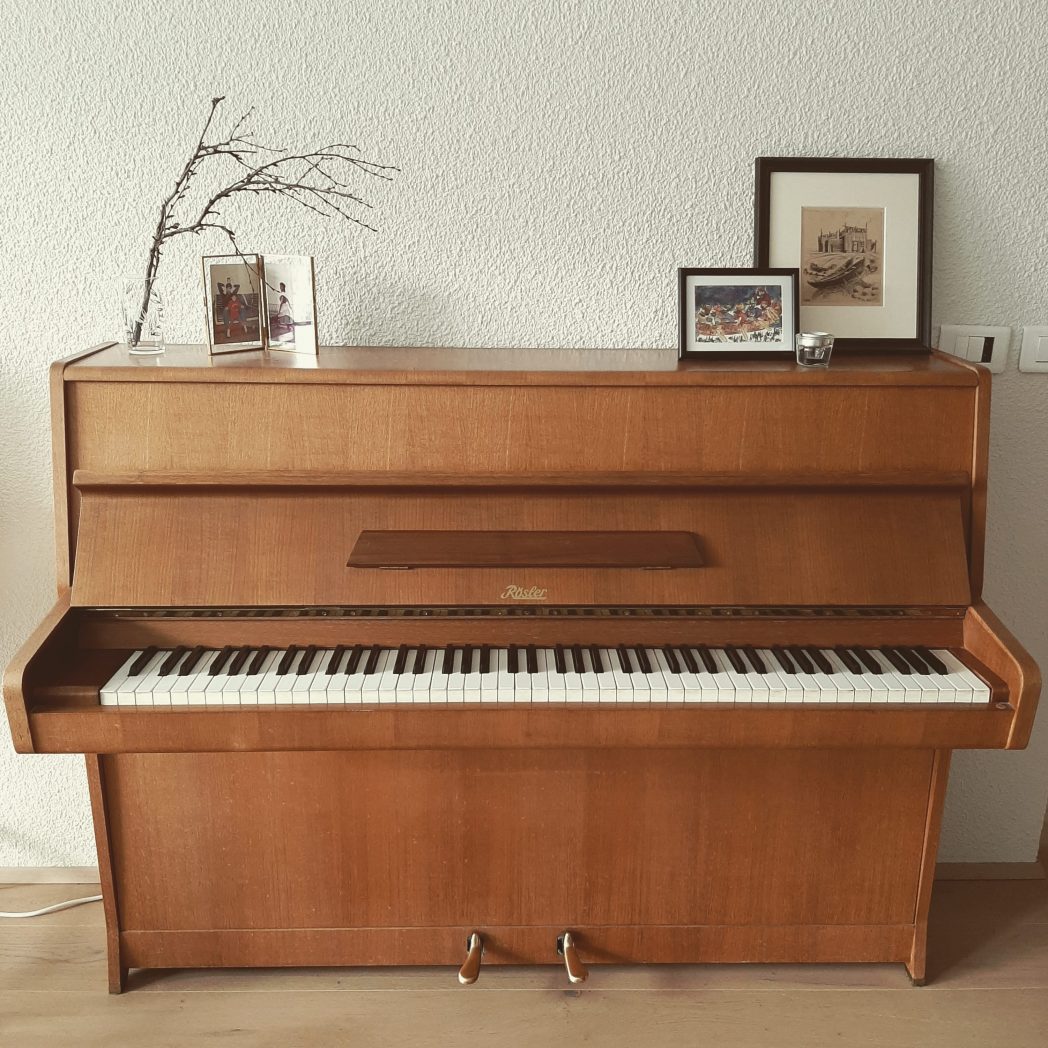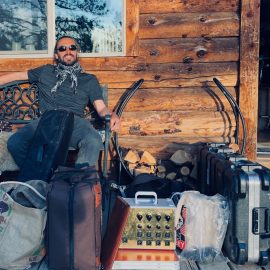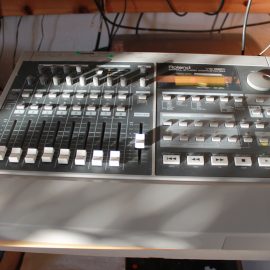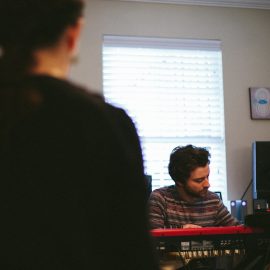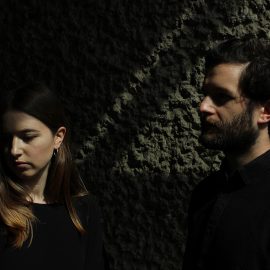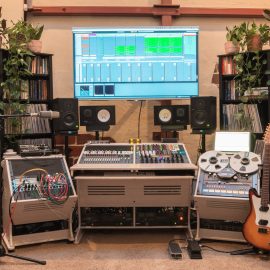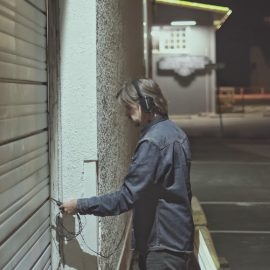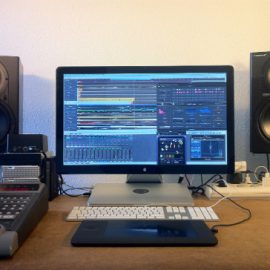Let’s start at the very beginning. Can you tell us how you got involved in composing, and what was your very first piece of gear?
I grew up in a very musical household: my parents both sang in choirs, my sisters and I learned instruments from an early age and we had both a grand and an upright in our house. My first “gear”, if you can call it that, was my Yamaha beginner classical guitar. Apparently, whenever I’d get upset as a kid, I’d lock myself in my room and played the guitar until I felt better. I wish I had such smart coping methods these days…
As I got into my teens, I would spend time with my wonderful guitar teacher dissecting Bach arrangements f.ex. None of Bach’s music is obviously written for guitar, so it’s very common to make your own arrangements and fingerings. I enjoyed that process a lot and it definitely inspired me to start looking into the methodology behind each composition, instead of just the technique of how to perform it.
Around the same time, I began to fall in love with film music and started to think that was something I could potentially do with my life. So by the time I had finished my guitar studies, I knew focusing on being good at playing a single instrument wasn’t enough for me.

How many different studio iterations have you gone through, and what does your final setup look like right now?
I definitely haven’t gotten to my final setup yet. I am very fortunate to have the solid foundation that comes with growing up in a classical environment – but classical music education can also be a pretty rigid box and one that I’ve struggled to break out of. Meaning I still feel like a rookie when it comes to most things studio related. But I’ve learned to accept what my strengths and weaknesses are musically, and one of my strengths is to be able to work with very little.
I have a small studio space that I share with other people, meaning I’m there half of the week and work from home during the other half. At home, I have my Rösler upright piano, and that’s where a lot of creative work happens. I have a pair of cheap Røde condensers to record demos there and often use the good old phone recorder to store ideas as well.
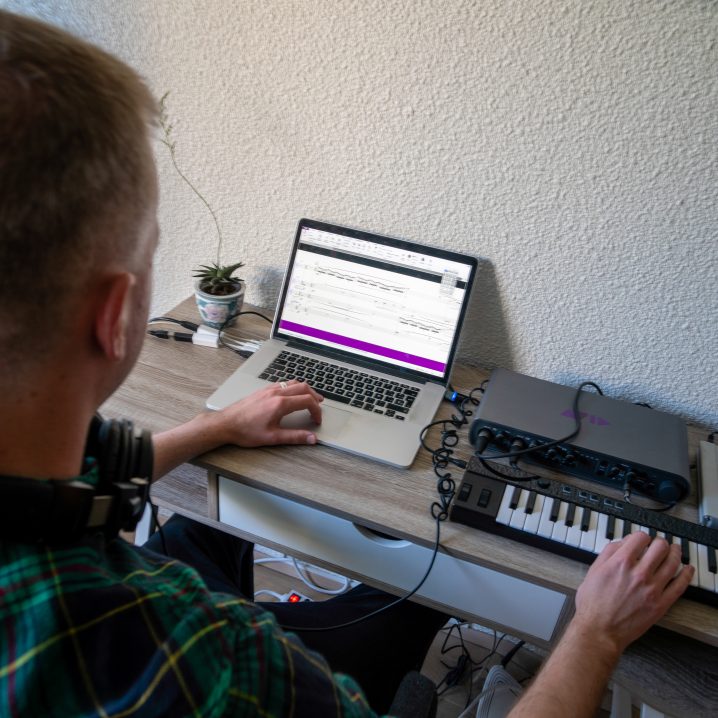
I’ve moved between studio spaces quite often, but my equipment more or less stays the same: laptop, m-box, MIDI keyboard, monitors, headphones… and that’s pretty much it. The downside of this is of course that I have been reliant on recording my music in other studios. The upside is that this gives me a lot of freedom, and I even take my office to my family’s countryside cabin every now and then.
The next step is to become more independent and be able to record at least quality piano and solo instruments in my own space, without sacrificing my minimalistic preferences.
Tell us about your favourite piece of hardware.
It would have to be my grandmother’s old upright piano, the one I grew up playing at home. She was Norwegian and got it as a present from her grandfather in Norway around 1930. She meant to move to Iceland with my grandfather but had to wait out the war while Norway was occupied by Germany. They then got on the first ship that sailed to Iceland once the war ended in 1945, and brought the piano with them.
It’s a gorgeous piano with a beautifully soft sound, and still sounds remarkably well to this day.
And what about the software that you use for production?
I use Pro Tools for most of my production work. It’s simply the DAW that I first got to know way back when, and where I feel most comfortable and efficient. I use Ableton Live as well from time to time for sound design and live shows. We could talk all day about plug-ins, but most of my go-to’s are from UAD, Slate, and Soundtoys.
Is there a particular piece of gear that you’re just dying to get your hands on and do you think one day you’ll have it?
See above for my grandma’s piano. My mom currently has it at her apartment, but I’d love to take care of it someday – and even dream of recording a cozy living room piano-themed album on it. One day.
Can you please share some aspects of sound design in your work?
I love taking recordings of acoustic instruments and turning them into something else entirely. You already know about (and are probably horrified by) my lack of analog gear, so this all happens in-the-box. My soundtrack for Chasing the Present is full of real string recordings, that are run through different filters, time-stretched, reversed, etc. It often gave them an almost vocal quality, like in the track Suffering.
And speaking of vocals, my personal favourite of my own sound designs are my choral manipulations. One of the first things I did when I started fooling around in Pro Tools was to take live recordings of my own choral music and twist them in all kinds of ways. You can hear it in the outro piece of my album Orbit, Týnd er tunga þín. Even though the methods I use aren’t groundbreaking by any means, it’s a soundscape that feels particularly personal to me, as it’s based on my own compositions. I love doing it so much that I’ve even started writing choral music with the purpose of sampling it later on…
Any particular new techniques that you tried out for your new album?
On my debut album Orbit, I tried to showcase as much of myself as possible. There were no limits, resulting in huge-sounding songs that perhaps rely a bit too much on their sheer size and number of elements. Don’t get me wrong, that’s super fun and I look forward to getting back to that soundscape.
But the new album, Landbrot, is all about holding back. The entire album is just a single piano and three string players. It comes from an inward state of mind, and making it became a purposeful exercise for myself to accept the simplicity of these compositions – which is much harder to do when the arrangements are stripped down so much. So in a way that was a new compositional technique for myself: to be able to write and produce songs that work just as well, if not better, when stripped down to the bone.
What does your live setup look like, and what do you bring with you when you travel for an extensive tour?
Currently, I’m doing solo shows with just a piano, a laptop, and a MIDI keyboard. I’ve done bigger shows in the past with a string section and my friend Drew (who programmed a lot of the beats on Orbit) running the Live session and playing synths – leaving me able to focus on playing piano, sing, and make bad jokes. A luxury I hope I’ll get to do again someday.
In both cases, I keep it super minimal equipment-wise. I sample all electronics beforehand so they can be played on my tiny portable MIDI keyboard, which fits in my backpack alongside my laptop, interface, a clean pair of underwear, and even a sock or two.
What is the most important environmental aspect of your current workspace and what would be a particular element that you would improve on?
Honestly, I have written some of my best music in sterile, windowless spaces. I understand how the idea of the Icelandic musician writing atmospheric music whilst looking at the glacier in their backyard is appealing… and a lot of us have a career partially thanks to that idea. The truth however is usually less romantic.
But that idea isn’t all wrong either – I can’t overstate how important it is to my mental health to have natural daylight in my workspace. I might only be looking at the ugly industrial buildings next door, but I’ll take that over having perfect acoustics in a windowless room any day of the week.
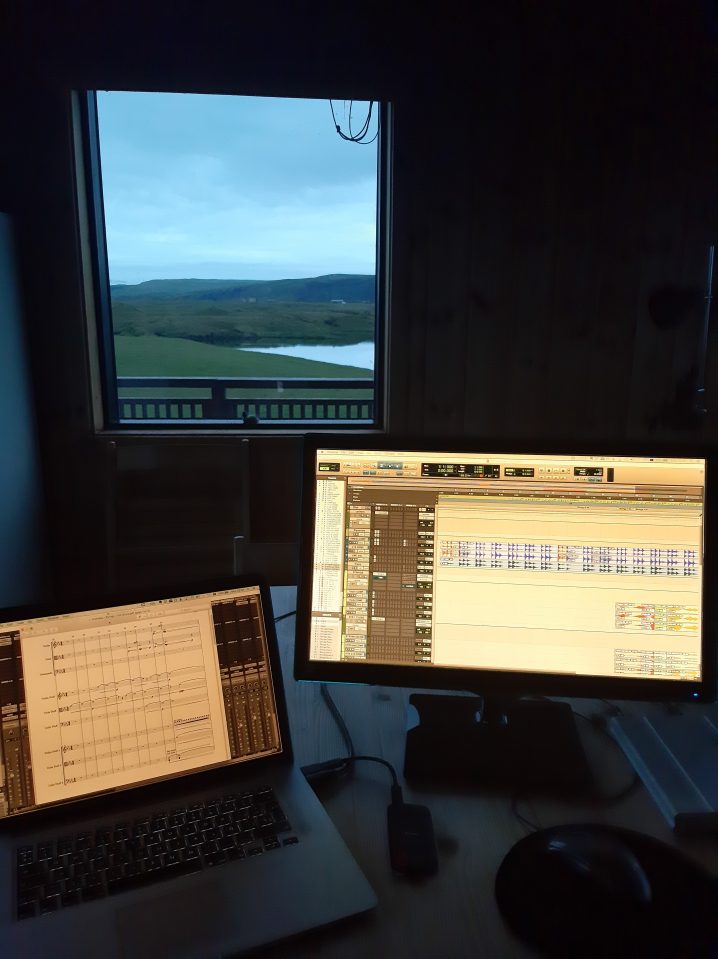
I could always do with more plants, books, art… things that I rarely get around to acquiring because in my head it never feels as important as the next email, the next mix, etc. Obviously, my head is what I need to improve on.
What can you tell us about your overall process of composition? How are the ideas born, where do they mature, and when do they finally see the light?
The key for me is to diversify the process. My compositions are always bound by the parameters of where they were created. And so to prevent my creativity from stagnating, I need to change those parameters every now and then.
I do that by changing it up: sometimes writing at the piano, sometimes with my guitar, sometimes straight into the DAW with MIDI, sometimes in Sibelius, and sometimes I’ll even nerd out completely and write out randomized harmonic matrixes in Excel and go from there. Wherever and however it happens, the goal is to make sure I don’t get lazy and write the same piece of music over and over again.
Once an idea has been formed, I prefer to make listenable demos early on in the process. Bounce it out, rest it for a day, go for a walk and listen back to it, go back and make some changes. Repeat until I’m happy – or more realistically until I’m emotionally exhausted and can’t imagine having to have to work on it anymore.
After the piece is complete, how do you audition the results? What are your reactions to hearing your music in a different context, setting, or a sound system?
I think it’s vital to take a break. I have a core group of people who I’ll show it to – they can approach it with fresh ears and a neutral perspective, and are therefore better equipped to give honest feedback.
Then it’s time for me to come back at it and completely ignore their advice. At this final stage, it’s important for me to not listen back too often, and use different settings and spaces to do it in. Ultimately the challenge is to be able to let it go. Something that is so incredibly hard to do but feels so rewarding once you’ve done it.
Do you ever procrastinate? If so, what do you usually find yourself doing during those times?
Procrastination is vital! Having a clear mind and fresh ears is everything, so I absolutely need to take regular sonic and mental breaks from whatever I’m working on. But procrastinating doesn’t have to mean spending hours every day on YouTube watching clips from The Office (although in my case it often does) – it can be going out for a walk, having a cup of coffee, or calling a friend.
Often I’ll even use one work project as procrastination from a different project, although that sounds horribly workaholic when I think about it. I’d better stick to The Office.
What gets you inspired?
Everything.
Music, people, everyday emotions, art, nature, daylight & darkness.
I find it very easy to be inspired, the challenge is how to use that inspiration.
And I think it’s important to note that we don’t always have to do that. It can feel great to let yourself be inspired and moved, without putting pressure on yourself to have to make something palpable from it. Just sit with that feeling. And when conditions are right for you, you can choose to do something with it.
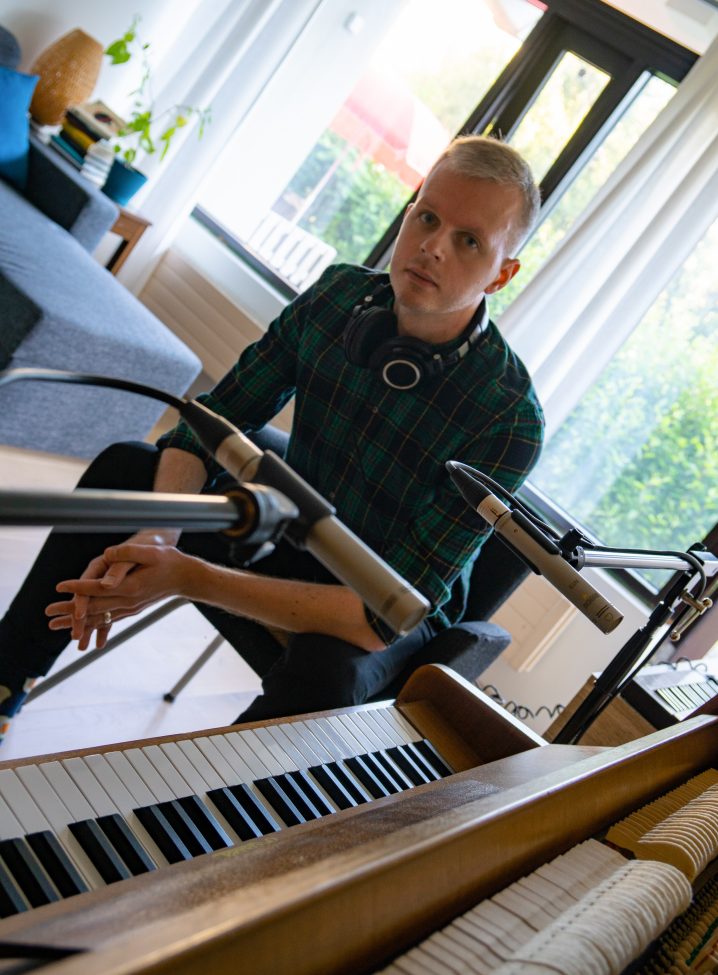
And finally, what are your thoughts on the state of “electronic music” today?
It’s well known that more musicians are blending modern classical music with electronic music – with people from both sides dipping their toes into the other. And as a classical nerd with a perpetual fear of most things gear-related, I am grateful for the technological advancements that have made the wonders of electronic music more accessible to me. That accessibility is key for myself and others to continue to experiment and cross typical genre borders, which can only be a good thing.
